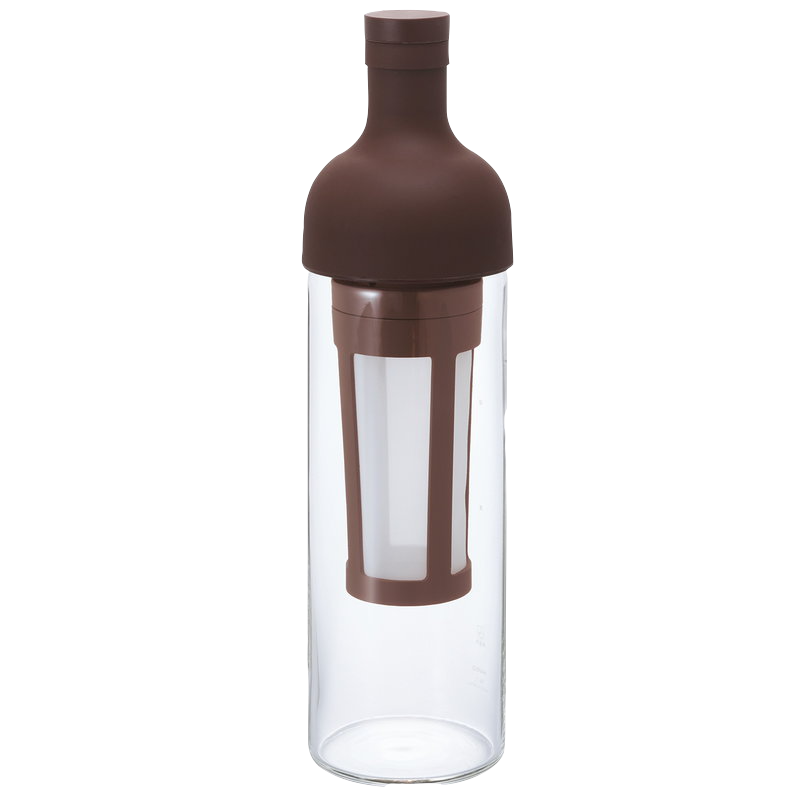
Cold Brew Bottle Hario FIC-70
Hario
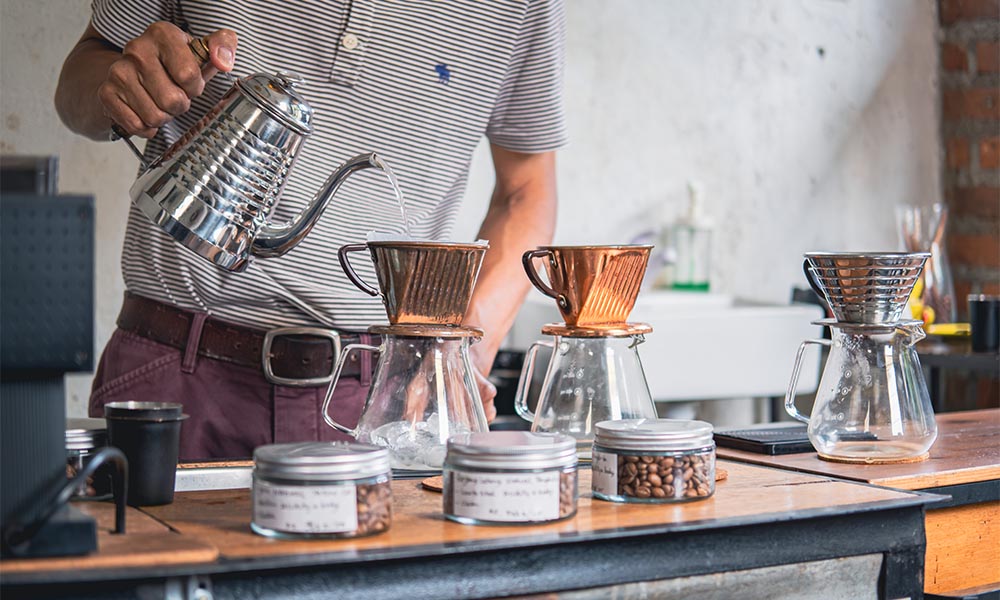

Cold coffee is not just a cooled espresso, but a category with its own identity. When the serving temperature drops, the balance and perception of aromas change: bitterness becomes sharper, acidity compresses, and the beans’ natural sweetness emerges with more elegance. To obtain a clean, pleasant cup, it’s essential to start from a fresh roast and a grind calibrated to the chosen method. With darker coffee blends you get a full, chocolatey profile, while with medium-roast single origins you enhance fruity and floral notes that, served cold, deliver a refreshing yet complex drink.
The most straightforward way to make a traditional iced coffee is to brew with hot water and then cool it with ice or in the fridge. Flash brew, or Japanese-style iced coffee, factors the ice into the drink’s proper dilution and the coffee-to-water ratio. This naturally reduces over-dilution but also requires adjusting certain parameters, including a finer grind to increase extraction. Those who prefer roundness and body choose cold brew, a cold extraction by prolonged immersion or slow drip that highlights smoothness, low acidity, and sweetness. The key, in every case, is controlling the coffee/water ratio, contact time, and grind size, variables that drive intensity and balance in the cup. Thanks to CaffèLab you can choose the best specialty coffee blends capable of captivating even the most discerning palates.
Japanese iced coffee (also called flash-brew or ice brew) is the quickest and simplest way to prepare cold coffee at home: brew hot directly over ice, so the coffee chills instantly and dilutes to the right strength. Compared to traditional cold brew, the result is a brighter, cleaner, more complex cup, because hot extraction releases aromas and the immediate cooling “locks” them in, avoiding the oxidation that affects coffees left in the fridge for hours. For cold brew, use a coarser grind and steep 12–18 hours at 4–8 °C with a ratio from 1:4/1:5 (a concentrate to dilute) up to 1:12 for a lighter “ready to drink.” Filter carefully, store cold in glass, and consume within 48–72 hours to preserve aromatic freshness. A simple cube test: taste the coffee right after pouring and again after the ice has melted to check stability and balance.
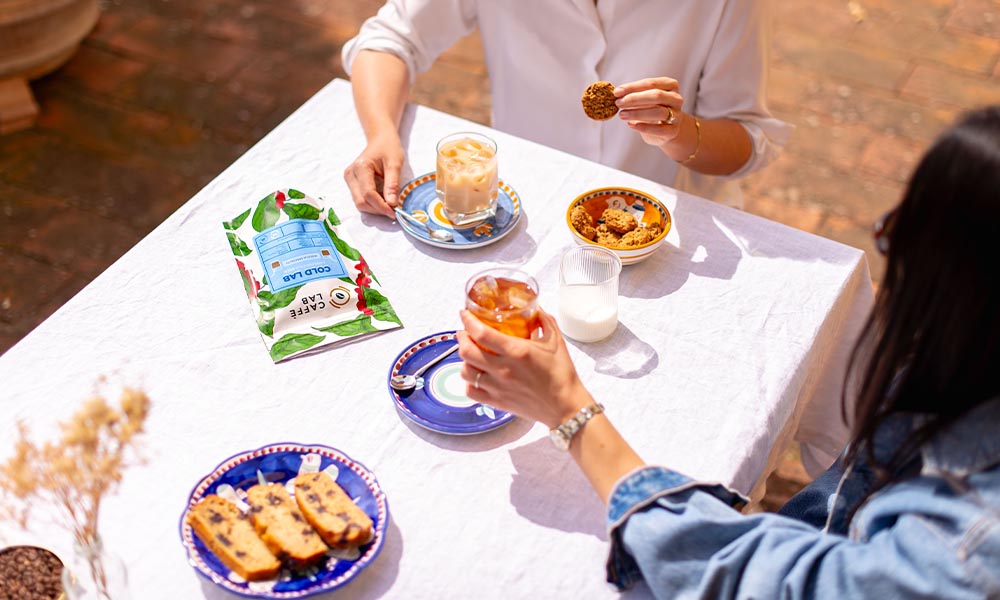
What are the differences between cold coffee and cold brew? To an untrained eye they might seem the same, but they’re not. Iced coffee is brewed hot and then cooled; it therefore follows the same logic as hot brewing, where contact time, water temperature, grind size, and dose all matter. A more aggressive extraction will tend to generate more body, bitter notes, and more evident acidity. The main difference between cold coffee and cold brew is that cold water, used for cold brew, cannot extract aromatic compounds, acidity, and even bitter notes as completely as hot water. The result is a rounder, more balanced drink with chocolatey notes. Hot water, on the other hand, best extracts a coffee’s aromatic notes and acidity.
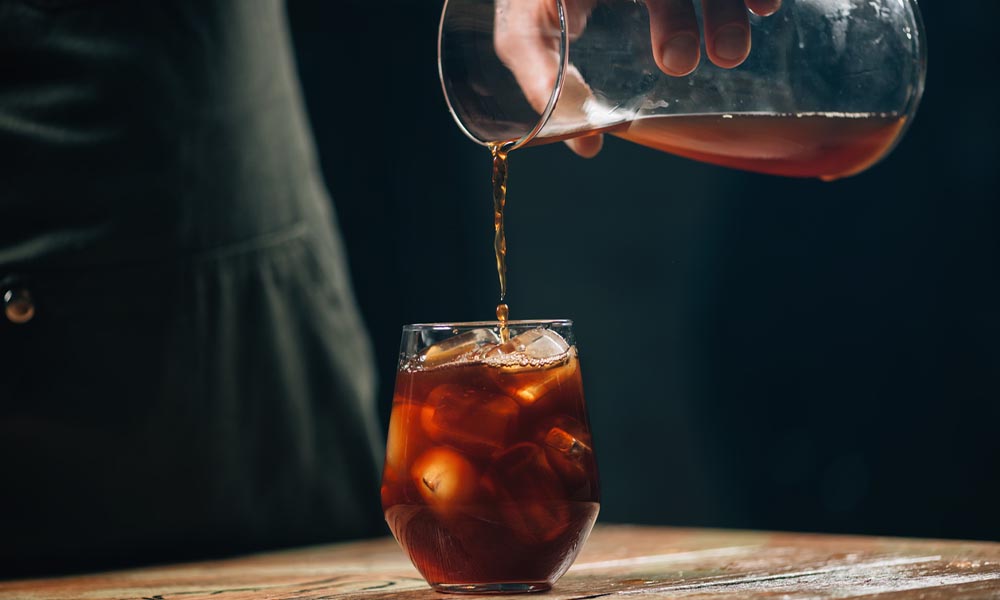
Shakerato coffee is the most elegant expression of Italian cold coffee: intense espresso, dry ice, and sweetener dissolved in advance to avoid graininess. The key is the controlled thermal shock inside the shaker, which creates a fine, stable foam thanks to microbubbles incorporated by vigorous shaking. For a professional result, follow these simple steps:
A splash of quality tonic water or a twist of citrus can amplify brightness and persistence, keeping the sip dry and clean.
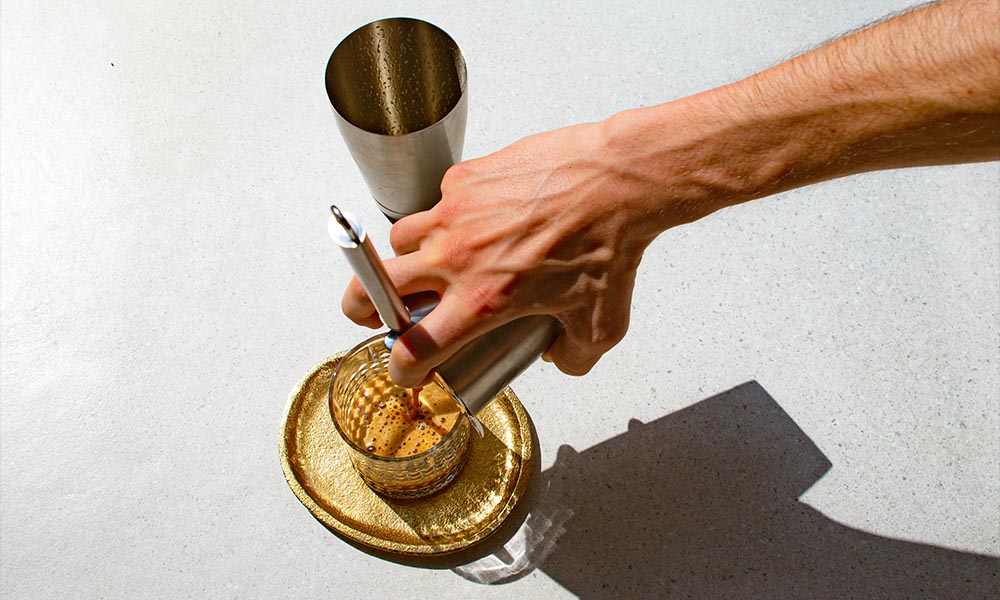
For a creamy cold coffee without resorting to cream, focus on clean, concentrated extractions and on cold texturing. With espresso or concentrated cold brew, add chilled micro-aerated milk or a plant-based drink with a high protein content to encourage natural creaminess; create the emulsion with an immersion blender or a vigorous shaker, working briefly so as not to warm the liquid. Build balanced sweetness by dissolving sugar in a small splash of hot coffee or by using cold simple syrup, so you don’t break the structure. Chill everything to fridge temperature, serve over large, clear ice, and finish with a thread of cold foam obtained by whipping cold skim milk with a frappe blender: the result is a silky, stable, aromatic sip, with a clean creaminess that respects the bean’s profile.
Serve cold coffee in thin, well-chilled glassware without overloading with sweeteners: the intrinsic sweetness of cold brew often makes sugar unnecessary. A touch of quality tonic water, a strip of citrus zest, or a hint of cold micro-aerated milk can create elegant variations without covering the coffee’s character. For pairings, favor dry pastries, tree nuts, and dark chocolate: the contrast between richness and freshness amplifies aromatic perception and prolongs the finish.